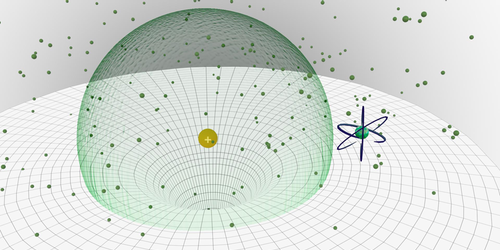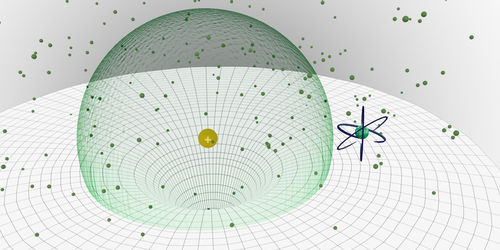Ion Suppresses Rydberg Creation
Rydberg atoms are giants. In these atoms, at least one electron is excited to a very-high-energy orbital, inflating the atom to thousands of times its normal size. Rydberg atoms are also generally loners, forming only at large distances from other Rydberg atoms. Now, Florian Meinert and colleagues from the University of Stuttgart in Germany have shown that Rydberg atoms are also shy around ions, whose presence inhibits their creation. The team envisions leveraging Rydberg atom suppression to monitor the path of an ion as it moves through an ultracold atomic system, such as a Bose-Einstein condensate.
In their experiment, the team created a single rubidium ion by firing a series of laser pulses at a cloud of ultracold rubidium atoms. They then guided the ion away from its starting point using an electric field. Next, the team hit the spot where the ion was created with a further pulse. Their goal was to create a Rydberg atom near the ion’s birthplace. When they waited less than 12 between ion creation and the subsequent laser pulse, the attempt failed. At longer wait times, the odds of generating a Rydberg atom increased, reaching about 30% (the same probability of Rydberg atom creation as when ions are absent) after 20 .
The team says that the success rate of Rydberg atom generation in an ultracold atom cloud could be used to track ion motion. When an ion is near an area zapped with a laser, no Rydberg atom should appear. But if the ion has wandered away, Rydberg atoms should start to materialize.
This research is published in Physical Review Letters.
–Christopher Crockett
Christopher Crockett is a freelance writer based in Arlington, Virginia.





